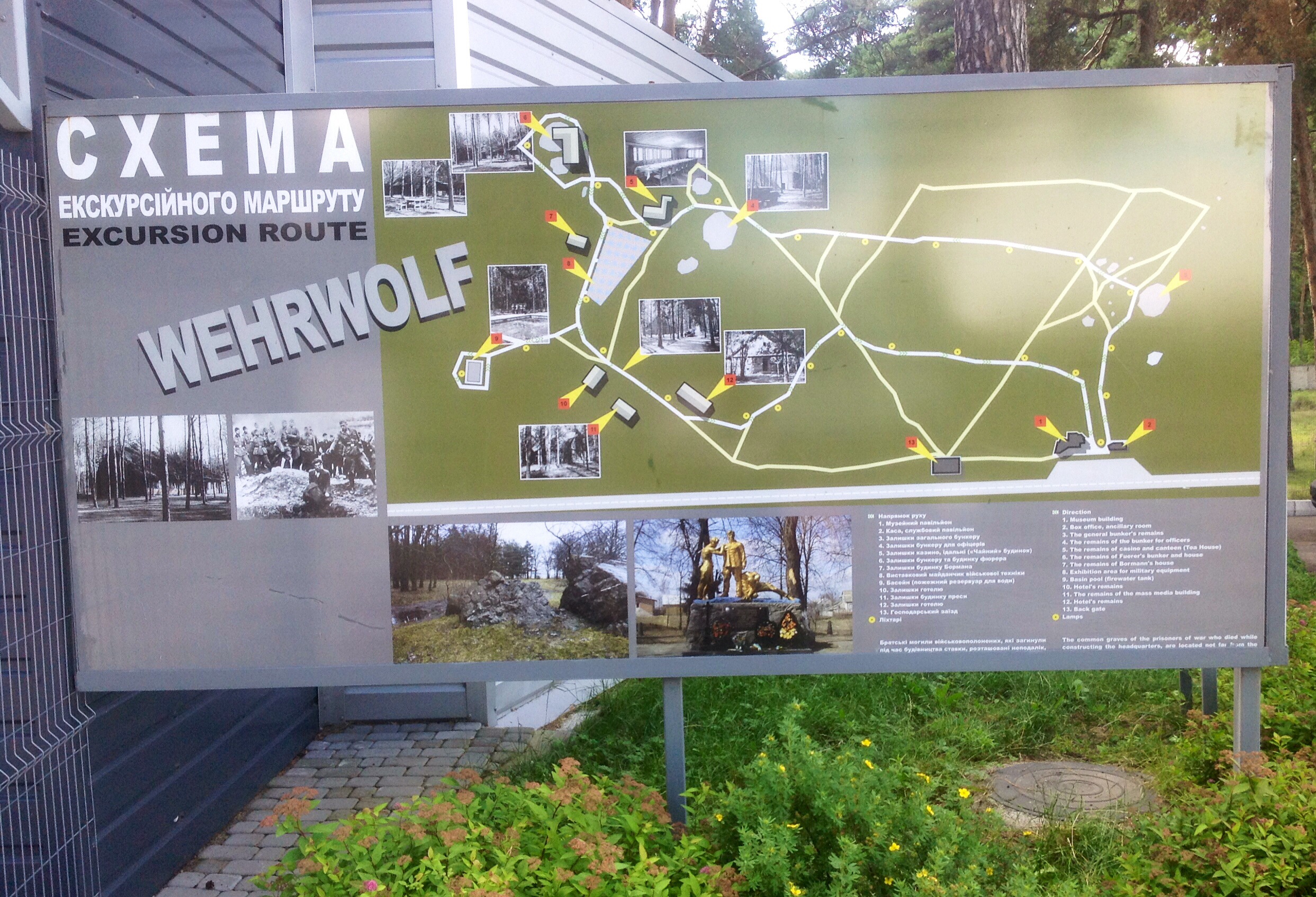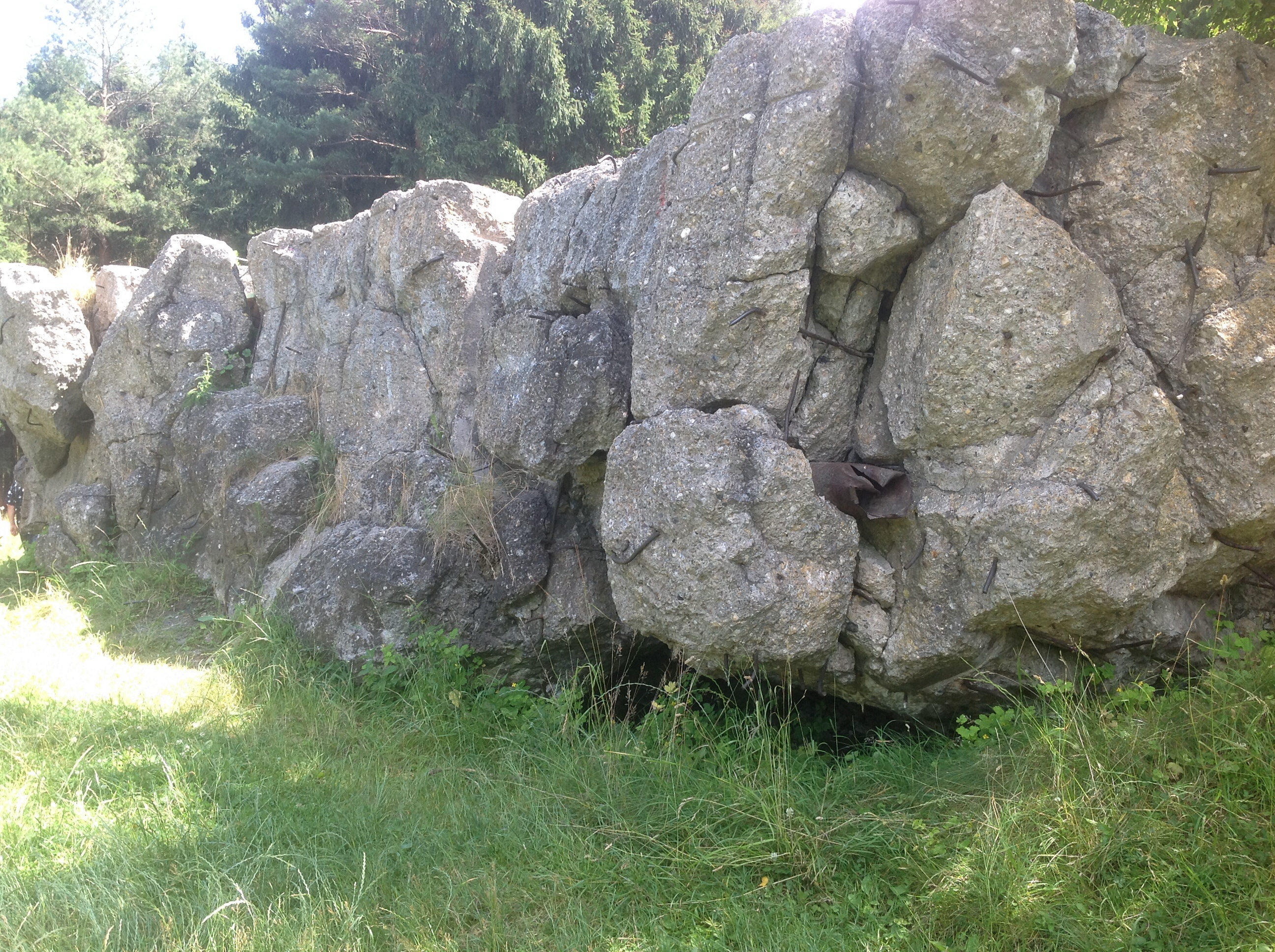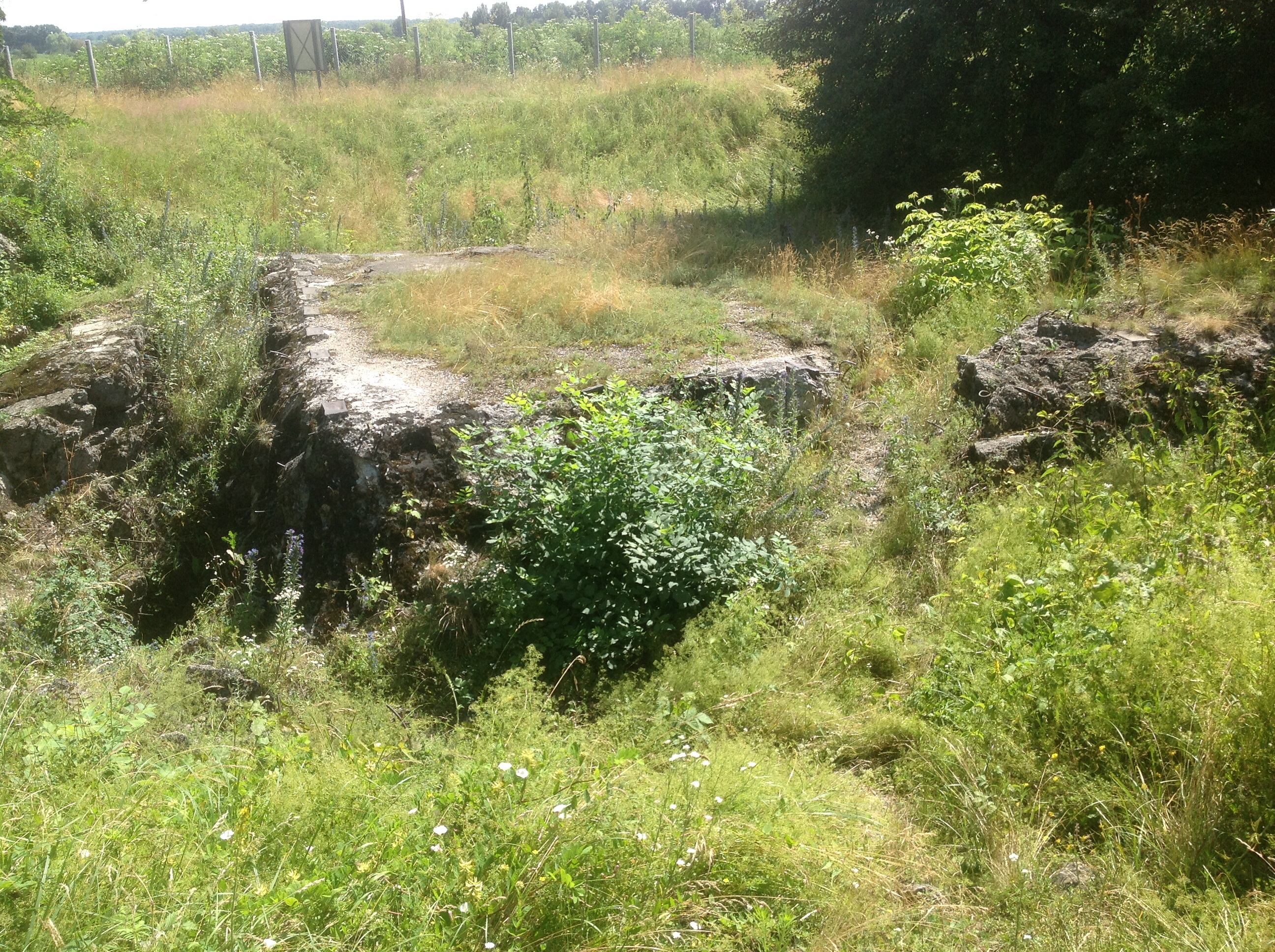 During occupation in Vinnytsya region over 200,000 civilians were shot and tortured in the concentration camps, prisons and ghettos. On September 19, 1941, the Nazi held a mass raid in Vinnytsya. About 10,000 people were caught and shot in Pyatnychany Forest. The second mass raid took place on April 16,1942. It took lives of 15,000 people. The occupants killed 1,800 mentally handicapped people at the regional Psychoneurological hospital, and the hospital became a casino for German officers. Before occupation about 99,000 people lived in Vinnytsya. In 1944 there were only 36,000 citizens. The occupants were cruel with rebels and those who helped the partisans and cryptos. 19 villages of our region shared the fate of Byelorussian Khatyn and Ukrainian Kortelisy, Bruslyniv, Pavlivka, Vasylivka, Shabelnya and Penkivka were burnt. 150 other villages were ruined partially. During occupation in Vinnytsya region over 200,000 civilians were shot and tortured in the concentration camps, prisons and ghettos. On September 19, 1941, the Nazi held a mass raid in Vinnytsya. About 10,000 people were caught and shot in Pyatnychany Forest. The second mass raid took place on April 16,1942. It took lives of 15,000 people. The occupants killed 1,800 mentally handicapped people at the regional Psychoneurological hospital, and the hospital became a casino for German officers. Before occupation about 99,000 people lived in Vinnytsya. In 1944 there were only 36,000 citizens. The occupants were cruel with rebels and those who helped the partisans and cryptos. 19 villages of our region shared the fate of Byelorussian Khatyn and Ukrainian Kortelisy, Bruslyniv, Pavlivka, Vasylivka, Shabelnya and Penkivka were burnt. 150 other villages were ruined partially.
During the war the population decreased by almost 50%. On January 1, 1941, there were 2,389,000 people, but on April 1, 1946 — 1,984,000. In the occupied territory the fascists created a number of prisons and camps for the prisoners of war. They were the virtual "death factories" - almost 46,000 people were killed there. According to the records, there were18 camps for the prisoners of war (concentration camps). 15 camps were in the German occupation zone and 3 one in the Romanian zone. The largest camps were in Vinnytsya, Zhmerynka, Gnivan, Lityn. There were two camps in Vinnytsya: "shtalag" (a camp for soldiers) and "oflag" (for officers). The departments of the camps were in Gnivan and Nemyriv. The prisoners of those camps were engaged in the construction works of Wehrwolf of headquarters. An important task for occupants was to take Ukrainians abroad and make them work for Reich. They were called "workers from the East". Thus, over 61,000 people left the region. Those who didn't want to come to the collection points, were forced to do that, the raids were held.
 The Nazi's external policy aimed at creating a new area for the Germans to settle, as for the nation of the higher race. The occupants planned to create certain districts settled by the Germans only. One of them. Hegewald, was situated in the southern part of Zhytomyr region and in the northern part of Vinnytsya region. The occupants planned to make such a settlement Wehrwolf in Kalynivka district. They wanted to thrust out 58,000 Ukrainians and settle 12,000-14,000 people of German origin there ("volksdeutsche"). The Nazis aimed at the total liquidation of Jews. In Vinnytsya region the occupants created 25 ghettos, 6 forced labor camps, a work camp and a prison. In the ghettos apart of the local citizens the ere dozens of thousands deported Jews from Bessarabia and Bukovyna. There were also people other nationalities (primarily those who were married to Jews). To "solve the Jewish issue finally" the fascists killed almost all the prisoners in ghettos and work camps in the region. During the Nazi occupation, the local citizens risked their lives to hide and save Jews. For that, after the war was over, many of them were awarded a title "Righteous Person of Nation". The fascists believed that their violence could frighten people and destroy the will for resistance and hope for victory, and would make them submit. The Nazi's external policy aimed at creating a new area for the Germans to settle, as for the nation of the higher race. The occupants planned to create certain districts settled by the Germans only. One of them. Hegewald, was situated in the southern part of Zhytomyr region and in the northern part of Vinnytsya region. The occupants planned to make such a settlement Wehrwolf in Kalynivka district. They wanted to thrust out 58,000 Ukrainians and settle 12,000-14,000 people of German origin there ("volksdeutsche"). The Nazis aimed at the total liquidation of Jews. In Vinnytsya region the occupants created 25 ghettos, 6 forced labor camps, a work camp and a prison. In the ghettos apart of the local citizens the ere dozens of thousands deported Jews from Bessarabia and Bukovyna. There were also people other nationalities (primarily those who were married to Jews). To "solve the Jewish issue finally" the fascists killed almost all the prisoners in ghettos and work camps in the region. During the Nazi occupation, the local citizens risked their lives to hide and save Jews. For that, after the war was over, many of them were awarded a title "Righteous Person of Nation". The fascists believed that their violence could frighten people and destroy the will for resistance and hope for victory, and would make them submit.
By the end of 1941, in the towns and villages there were 102 underground organizations and groups. In total, during occupation there were 211 of them. One of the first and most active underground organizations in Vinnytsya was headed by I. Bevz. In October 1941 an underground organization headed by A. Panchenko (Y. Levchenko) started activity. The cryptos gathered important information about the secret construction of Wehrwolf. In the region there were youth underground groups led by P. Melnyk, O. Tkachenko, V. Berezovskiy and others. In autumn 1942f after I. Bevz's group was destroyed, the centre of underground organization became a printing house "Ukrayina". During the war in Vinnytsya region there were 6 partisan organizations, 36 detachments and 8 separate groups with over 19,000 fighters. The largest partisan organization in the region was the "2nd J. Stalin Partisan Brigade (commander — A. Kondratiuk) and "V. Lenin Partisan Detachment" (commander — P. Kugay). They were created in 1943 and located in Illintsi and Kalynivka districts, accordingly.
 Wehrwolf was divided into the central and general zones. The central zone was surrounded by the metal net of 2.5 m high and two rows of razor wire. In its territory there was a Fuhrer's house with the bomb shelter, a bunker for officers a room for the Security Service, buildings for the senior officials, generals, commanders, personal aide-de-camps, secretaries, journalists and servants. There were also the baths, hair salon, broadcasting centre, hotel, casino and a pool. In Wehrwolf there were 81 wooden constructions in total and 3 bunkers (common, for officers and for Fuhrer). Near the headquarters there was a powerhouse and a hydraulic pump station. There was telephone communication with Berlin, Vinnytsya, other headquarters and airdrome in Kalynivka. Around the headquarters there were great many ground observer posts, fortifications, machine-gun nests and locations for the field-guns. The battle-planes from the Kalynivka airdrome controlled the situation in the air. During the construction works many plants were destroyed, therefore about 800 trees and thousands of bushes were brought and planted, and about 12,000 square meters of ground was covered with grass. Several kilometres of roads and paths were made. Wehrwolf was divided into the central and general zones. The central zone was surrounded by the metal net of 2.5 m high and two rows of razor wire. In its territory there was a Fuhrer's house with the bomb shelter, a bunker for officers a room for the Security Service, buildings for the senior officials, generals, commanders, personal aide-de-camps, secretaries, journalists and servants. There were also the baths, hair salon, broadcasting centre, hotel, casino and a pool. In Wehrwolf there were 81 wooden constructions in total and 3 bunkers (common, for officers and for Fuhrer). Near the headquarters there was a powerhouse and a hydraulic pump station. There was telephone communication with Berlin, Vinnytsya, other headquarters and airdrome in Kalynivka. Around the headquarters there were great many ground observer posts, fortifications, machine-gun nests and locations for the field-guns. The battle-planes from the Kalynivka airdrome controlled the situation in the air. During the construction works many plants were destroyed, therefore about 800 trees and thousands of bushes were brought and planted, and about 12,000 square meters of ground was covered with grass. Several kilometres of roads and paths were made.
When the Soviet army started liberating the Right-Bank Ukraine, the headquarters couldn't be used anymore. On December 28, 1943, the Fuhrer ordered to destroy all the constructions in Wehrwolf. Still, that order wasn't implemented at once — the headquarters operated until March 1944. At the beginning of March 1944 the wooden buildings were burnt, the equipment was dismantled and taken away, and only 3 bunkers were left. On March 13-15 the leading detachments if the Soviet army occupied the headquarters' territory and examined it. They didn't find important papers or valuable things there. On March 16 the Nazis managed to occupy the headquarters again and blew it up. The water supply system, the heating plant, the drainage system and other systems were entirely destroyed.
On December 28,1943, the forces of the 1st Ukrainian front under command of the general Mykola Vatutin started liberating Vinnytsya region, as a part of Zhytomir-Berdychiv operation. They liberated the districts in the north and east first. The final battles for liberation of Vinnytsya region started in March 1944 as a part of Proskuriv-Chernivtsi and Uman'-Botoshany operations of the 1st and 2nd Ukrainian Fronts. 13 armies took part in battles for liberation of Vinnytsya region: 6 common, 5 armored and 2 air force armies, including 500,000 soldiers. The 38th army under command of the colonel-general K. Moskalenko fought for Vinnytsya. On March 20 the regional centre was liberated, and in the next six days the Soviet forces liberated the region completely. 125 liberators were granted a title of the Hero of the Soviet Union for their deeds in those battles. 24 of them died in the battles in this region. 11 armies were given honorable names, such as "Vinnytska", 4 — "Vapnyarska", 4 — "Zhmerinska", and 7 — "Dnistrovska". Vinnytsya region was liberated but ruined. The direct damages to the national economy made up 19.6 billion rubles (calculated based on the pre-war prices). Ukraine was completely liberated from the German fascist armies on October 28, 1944. The battles for liberation of the Central and Southeastern Europe started. The enemy army violently resisted, trying to stop the Soviet army, but it had to face the courage and heroism of our warriors. Millions of Ukrainians together with soldiers and officers took active part in liberation of European countries. There were thousands of citizens of Vinnytsya region among them. On April 16,1945, the last operation started — the fight for Berlin, and it finished with the Great Victory. On May2, 1945, a red flag was mounted on the Reichstag, and on May 8 the fascist Germany capitulated.
[Whith Sergiy Klymenko's text]
Discover Ukraine with Vinnytsya Private Tour Guides
|